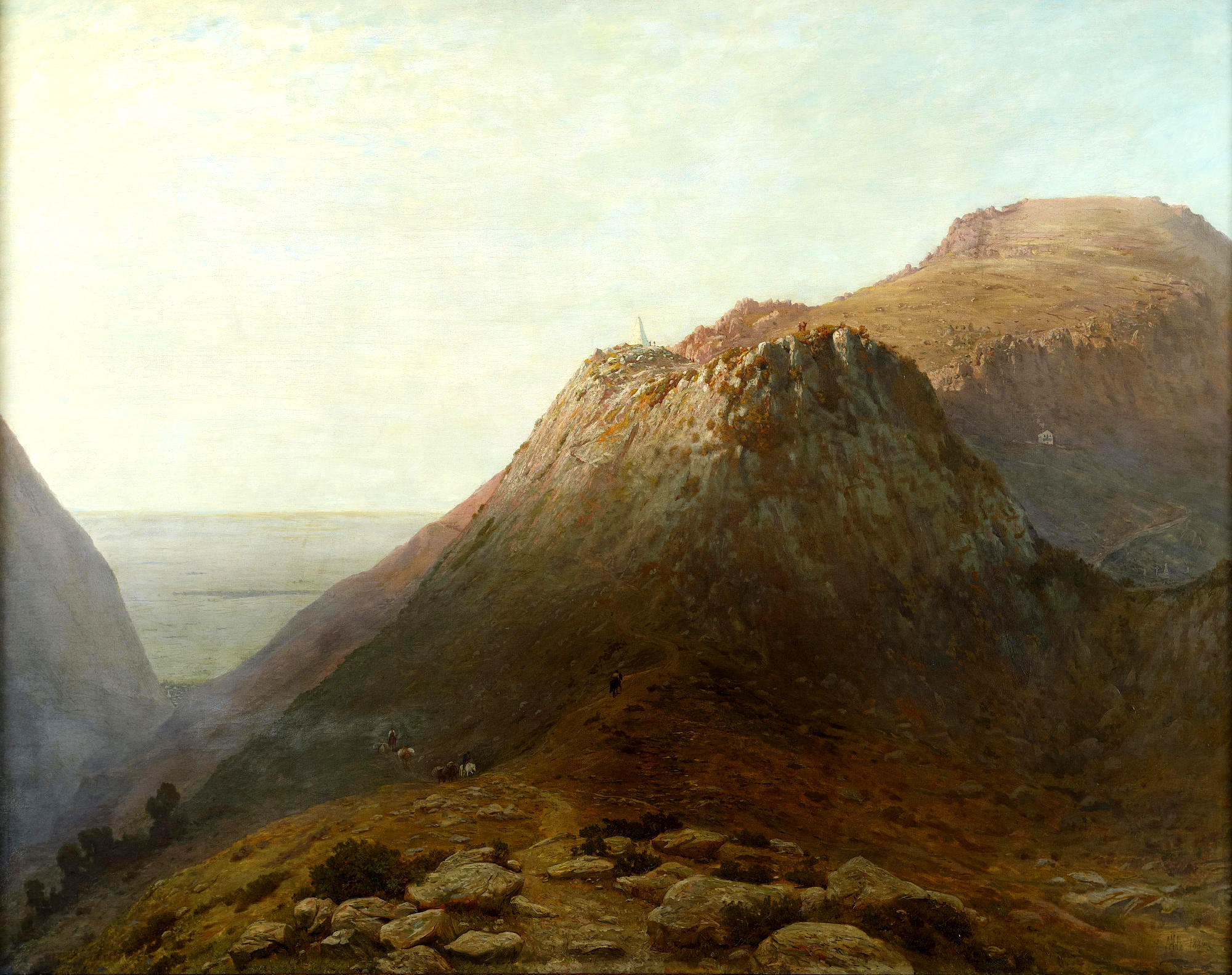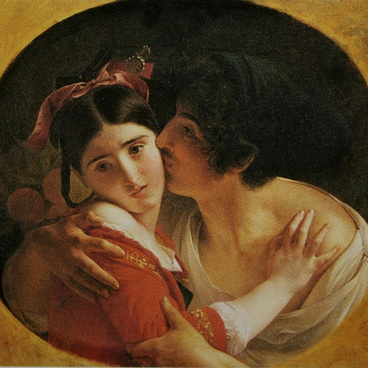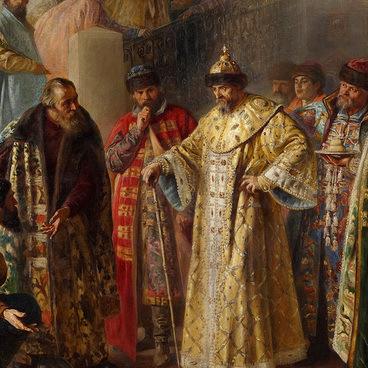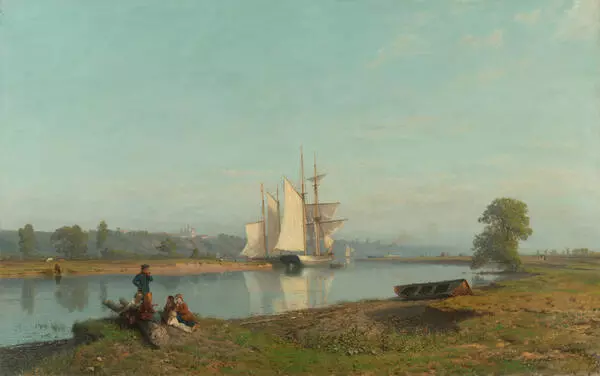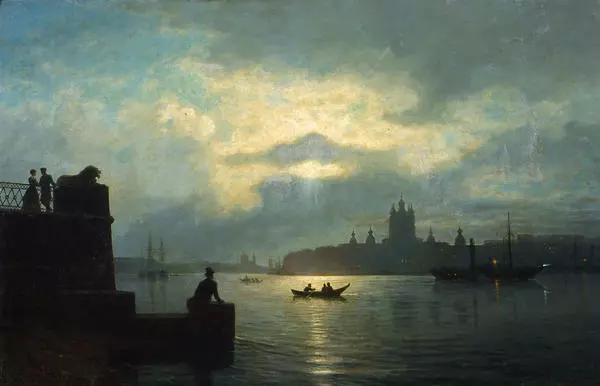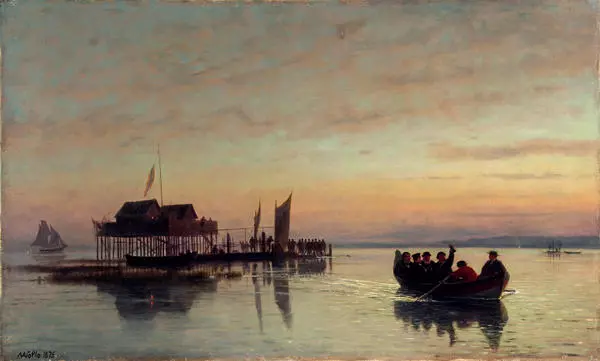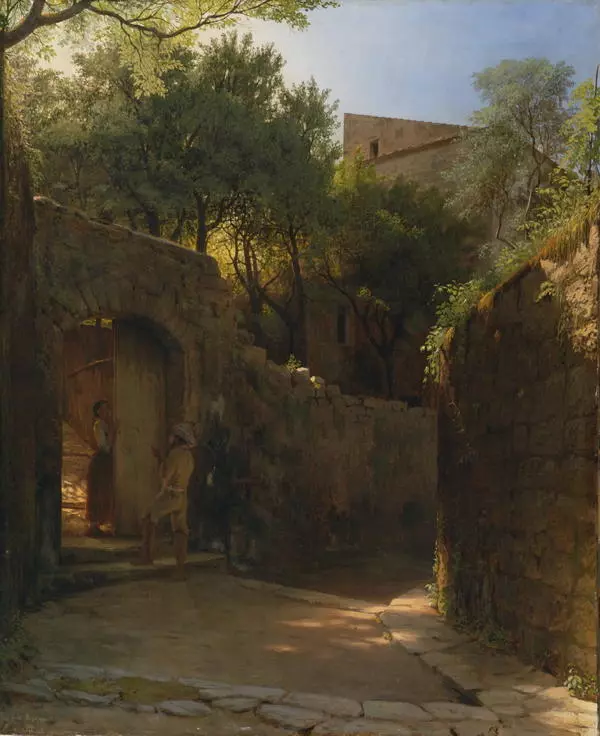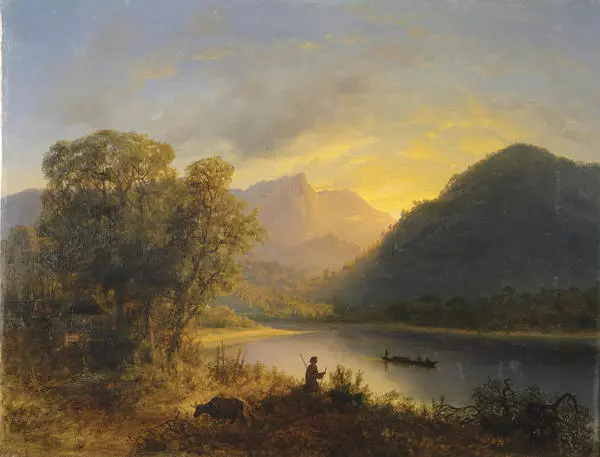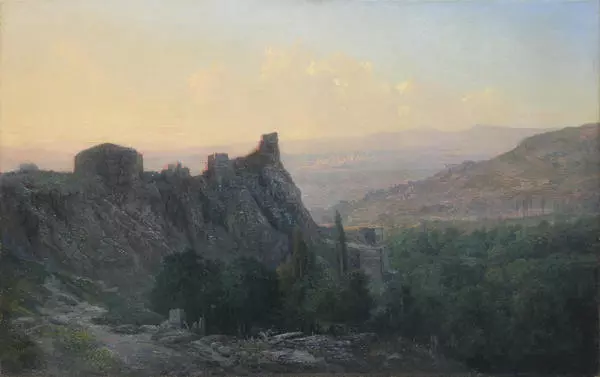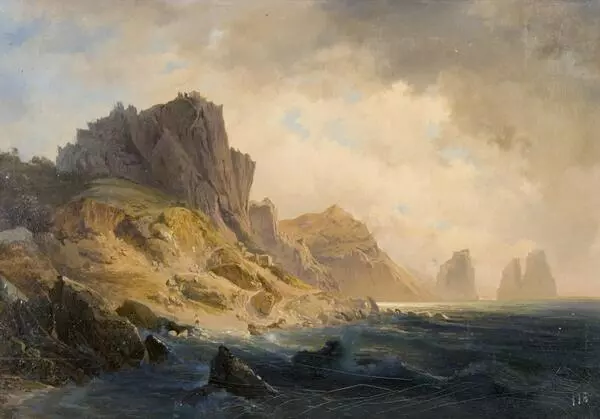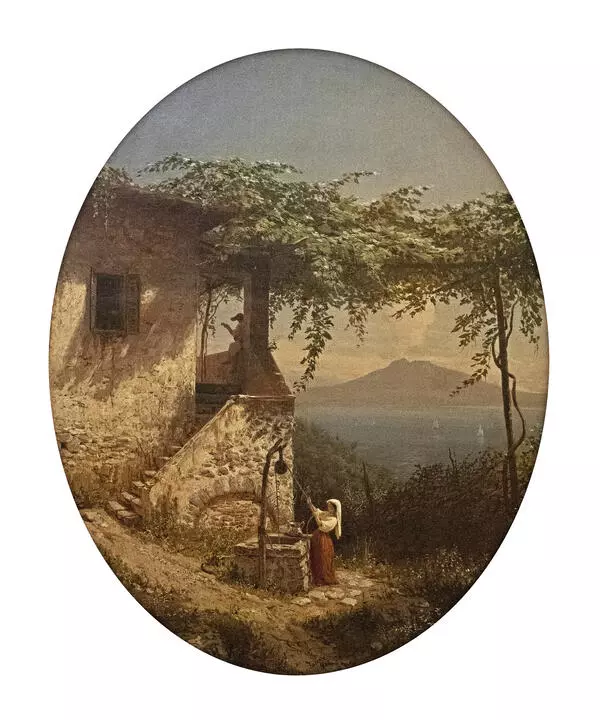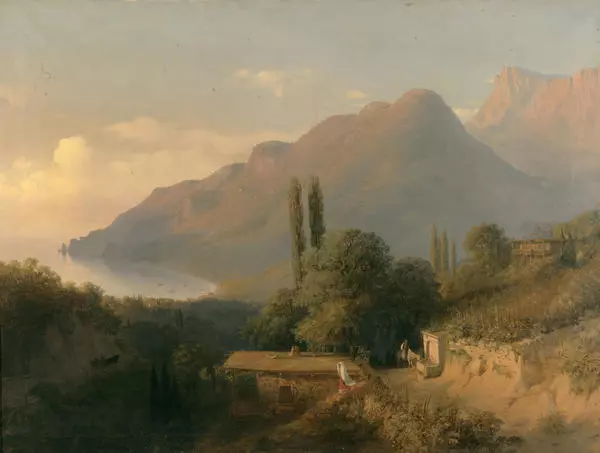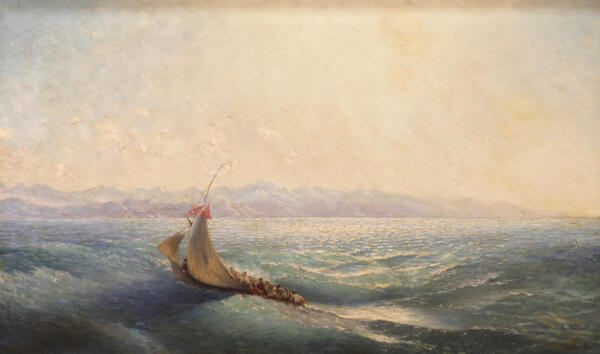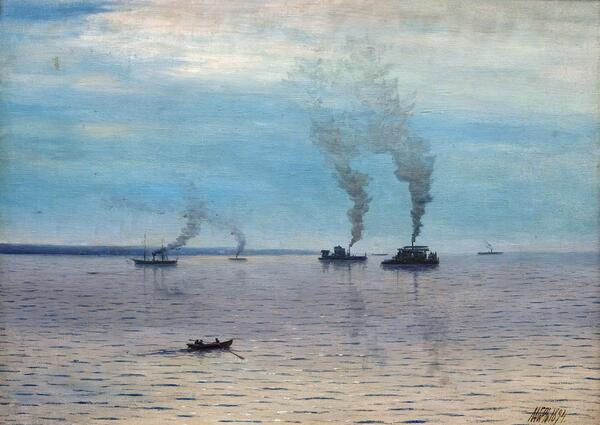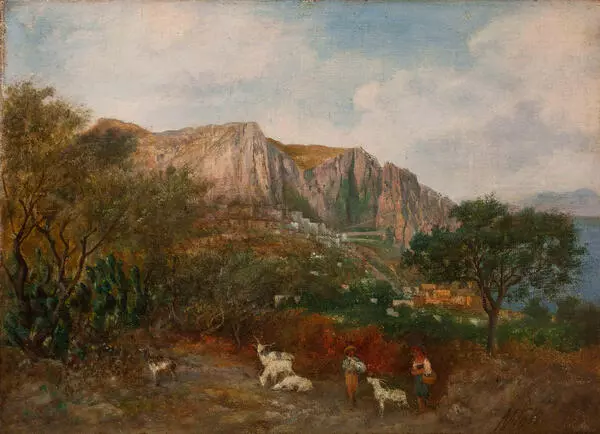Lev Feliksovich Lagorio (1827-1905) was a student of I.K. Aivazovsky. In the museum’s exposition, one can see his works “Shipka Pass” (1884) and “Seascape” (1897).
“Shipka Pass” belongs to a series of paintings dedicated to the Russian-Turkish war of 1877-1878 ordered to Lagorio by Alexander III. The artist approached this work with great responsibility, intending to write etudes “certainly at the very site of the battle” for “unconditionally faithful transfer of the terrain”. The execution of the order thus dragged on for ten years. However, studies and landscapes, created as preparatory to large-scale battle scenes, are of independent interest.
On canvas, the artist depicts a majestic mountain range with a peak illuminated by the sun and foggy haze in the gorges. A chain of riders peacefully riding on packhorses in the foreground integrates with mossed and stoned bare slopes. The color scheme of the painting is restrained and monochrome. Lagorio builds the form and conveys the space, using all the variety of tones of the same color scheme - from the darkest to almost white - and clearly working out all the details. Harmony and peace reign in the picture, but the very image of the famous Shipka Pass in the Russian consciousness is involuntarily associated in with tragic events - and the canvas takes on a symbolic meaning.
The Shipka mountain pass, 1,185 meters high and 1.5 kilometers long, was of great military strategic importance for the Russian army, since it opened the shortest route from northern Bulgaria to Turkey. Russian troops managed to capture and hold the pass only thanks to the courage and initiative shown by both ordinary soldiers and their commanders. The most difficult in Shipka’s defense was the five-month winter ‘sitting’, which was always reported in military reports as: ‘Everything is calm on Shipka’. In reality, soldiers and officers not only died under enemy artillery fire, but also died from cold and rampant diseases.
